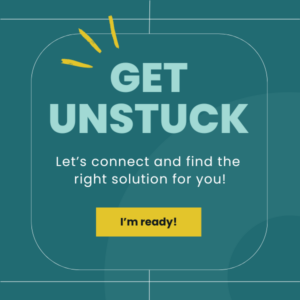AI has the potential to fundamentally change the way we work—not just in theory, but in the day-to-day rhythms of marketing, sales ops, RevOps, and customer experience teams. At its best, AI can help us scale what works, automate what drains us, and create seamless customer journeys that feel personal, not robotic.
Every organization wants to implement AI, because they know the value, but teams are navigating real challenges: unclear use cases, disconnected data, limited internal expertise, and a natural hesitation that comes with change.
A recent Gartner survey found that 77% of executives believe AI will give them a competitive edge—but only 44%, meaning less than half, feel confident in their roadmap to get there.
To help teams navigate AI adoption, the experts at Sercante put together an AI Starter Kit filled with demos, real-life examples, expert recommendations, and insightful how-tos for overcoming the most common AI adoption obstacles, which is what inspired this article.
Here are the six most common AI adoption roadblocks the team has seen firsthand—and some practical, no-nonsense ways to work through them.
Obstacle #1 Data silos are stalling progress
You might be feeling this if…
Your team is using multiple tools that don’t talk to each other, reporting feels unreliable and takes forever, and you’re not quite sure where all your customer data even lives.
How to move forward:
AI can’t do its job if it doesn’t have access to clean, connected data. Start with a simple audit: where is your data, and who owns each piece? From there, focus on one high-impact use case and use integration tools (like a customer data platform or middleware) to bring data together. Keep it focused—you don’t have to solve the whole thing in one go.
Obstacle #2 Lack of trust in accurate results
You might be feeling this if…
There’s skepticism around AI recommendations, hesitation to take action on outputs, or concerns about compliance, bias, or lack of transparency.
How to move forward:
This isn’t just about proving that AI “works”—it’s about making people feel safe using it. Prioritize tools that show their work (think explainable outputs). Run small pilots to validate results and let the data do the convincing. Also appoint internal champions who can model responsible, thoughtful AI use.
If you’re just getting started, this article offers helpful grounding: 7 tips for how to get started with AI.
Obstacle #3 Skill gaps
You might be feeling this if…
AI feels too technical or intimidating for the team, and you’re relying on one or two people to drive all the innovation.
How to move forward:
You don’t need a team of data scientists to start using AI. Launch basic AI literacy training by role—what should a CX leader know about AI vs. someone in RevOps? Create safe spaces for learning and experimentation. And if there are areas where you need deeper expertise, don’t be afraid to lean on partners while your team ramps up.
Obstacle #4 No clear use cases
You might be feeling this if…
Your team has a shiny new AI tool, but no one knows what it’s for—or conversations are stuck at the “someday” level. Or conversations around AI remain at the hypothetical level, but no one is actually taking the plunge to use it daily and point to how it is helping them scale and be more efficient.
How to move forward:
Bring AI down to earth. Host simple workshops by function and explore high-impact, low-effort use cases: AI-generated email copy or campaign briefs, summarization, agentic lead qualification and routing, FAQ case deflection through knowledge article references. Document small wins and share them internally—that success story from the marketing team might inspire the sales org to try something next.
Obstacle #5 Resistance to change
You might be feeling this if…
There’s pushback from users or leaders who feel uneasy, or concerns that AI might replace jobs or change the nature of their work. Or you’re hearing team members say “But we’ve always done it this way.”
How to move forward:
There’s no way around it, change will always evoke emotions—discomfort, worry, anger, excitement—you get it. However, how we choose to respond is what is in our control, and we can either choose to keep our shields up with AI or we can see it as an opportunity to innovate, scale what we do best, and create even better experiences for customers.
For conversations with your team, consider reframing AI as a co-pilot that takes on the repetitive tasks, not a replacement for human expertise. Involve employees early and let them help shape how AI gets used. Highlight wins that make daily work easier and more efficient.
Obstacle #6 ROI concerns
You might be feeling this if…
Budget holders want to see results before approving spend, or it’s unclear how success will even be measured.
How to move forward:
In the beginning, when you’re identifying use cases, consider the metrics that will be used for each one to evaluate success and tie these to clear business outcomes.

In the beginning, it may be as small as time saved during campaign building, but when you multiply that time saved over the course of the year, and the amount of team members it affects, that will add up to big results. Then, as Sercante VP of Growth & Alliances, Lauren Noonan, shared on the Connections Recap session, answer the bigger question, “What are you going to do with the time you get back and how will it impact the organization?” When you answer that question, it will show leadership the existing gap between where you are now and the level of growth that could be reached if your team was using AI.
When you’re building your AI roadmap, include the expected short-term wins that will come with your initial low-level of effort use cases and the long-term goals the team is after to give your team a big picture that everyone can align on.
Overcoming to get started with AI
The road to AI adoption isn’t about flipping a switch. It’s about taking deliberate, doable steps—ones that meet your team where they are and build toward where you want to go.
Start by acknowledging what obstacles you and your organization align with the most and then work through the steps above to start to overcome. And if you’d like a third-party expert’s insight, the Sercante team can help. We’ve partnered with dozens of teams to move past the blockers and build AI strategies that actually work in the real world, and have guided them on the path toward driving growth with AI at their organization.








